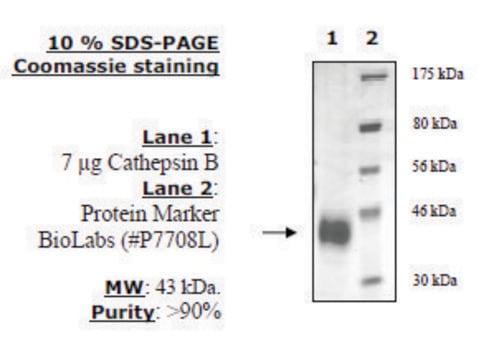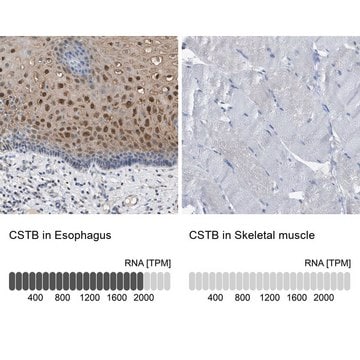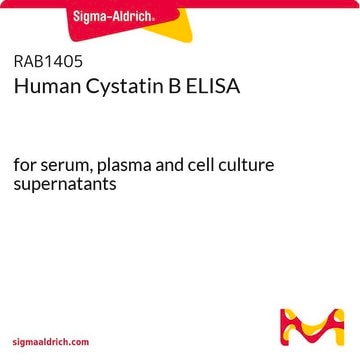C4249
Cystatin B human
recombinant, expressed in E. coli, solid, ≥95% (SDS-PAGE)
Sinônimo(s):
CPI-B, CST6, CSTB, EPM1, Liver Thiol Proteinase Inhibitor, PME, STFB, Stefin B
Selecione um tamanho
R$ 5.069,00
Previsão de entrega em31 de maio de 2025
Selecione um tamanho
About This Item
R$ 5.069,00
Previsão de entrega em31 de maio de 2025
Produtos recomendados
Nome do produto
Cystatin B human, recombinant, expressed in E. coli
recombinante
expressed in E. coli
Nível de qualidade
descrição
contains a N-terminal 7X His-tag
Ensaio
≥95% (SDS-PAGE)
Formulário
solid
peso molecular
apparent mol wt ~13 kDa by SDS-PAGE (reducing)
nº de adesão NCBI
temperatura de armazenamento
−20°C
Informações sobre genes
human ... CSTB(1476)
Descrição geral
Aplicação
Ações bioquímicas/fisiológicas
Reconstituição
Código de classe de armazenamento
11 - Combustible Solids
Classe de risco de água (WGK)
WGK 3
Ponto de fulgor (°F)
Not applicable
Ponto de fulgor (°C)
Not applicable
Escolha uma das versões mais recentes:
Certificados de análise (COA)
Não está vendo a versão correta?
Se precisar de uma versão específica, você pode procurar um certificado específico pelo número do lote ou da remessa.
Já possui este produto?
Encontre a documentação dos produtos que você adquiriu recentemente na biblioteca de documentos.
Active Filters
Nossa equipe de cientistas tem experiência em todas as áreas de pesquisa, incluindo Life Sciences, ciência de materiais, síntese química, cromatografia, química analítica e muitas outras.
Entre em contato com a assistência técnica







